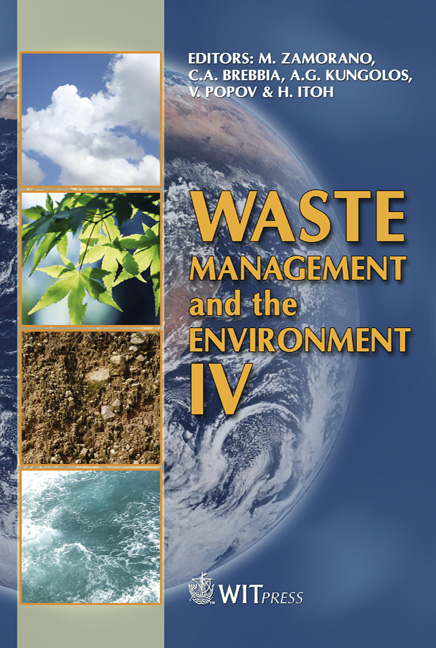Biological Treatment Of Petroleum Contaminated Soils By Soil Slurry-sequencing Batch Reactors (SS-SBRs)
Price
Free (open access)
Transaction
Volume
109
Pages
8
Page Range
751 - 758
Published
2008
Size
293 kb
Paper DOI
10.2495/WM080761
Copyright
WIT Press
Author(s)
B. Torabifar, A. Torabian, A. A. Azimi & M. Vossoughi
Abstract
The soil slurry-sequencing bath reactor (SS-SBR) was studied to treat poorly graded sand with clay (SP-SC) contaminated by aged petroleum hydrocarbons and polycyclic aromatic hydrocarbons (PAHs) with concentrations of 23000 mg/kg and 750 mg/kg respectively. An 8 L bioreactor was operated with a 10% solid concentration (0.1 kg dry soil/L slurry). The fill period was relatively instantaneous, and the draw period lasted approximately 1 minute so the react period comprised essentially the entire cycle time. In the draw period a fraction of slurry (10%) was removed from the SS-SBR weekly and it was replaced with untreated slurry. This volumetric replacement strategy provided 70 days hydraulic retention time (HRT). The process performance was assessed by monitoring total petroleum hydrocarbons (TPH) and PAH concentrations, pH, dissolved oxygen (DO), oxygen uptake rate (OUR) and colony forming units (CFU). Due to a high concentration of TPH, silica gel clean up was performed to specify PAH degradation. The results have shown high overall removal efficiency for TPH close to 97% whereas biodegradation of PAHs has been performed with a removal efficiency of 90%. Keywords: petroleum contaminated soils, bioslurry, SS-SBR, TPH, PAH. 1 Introduction For many years the soils of Azimabad, in the vicinity of the Tehran refinery plant, have been contaminated with petroleum hydrocarbons through spills, leakage of oil reservoirs, decay pipelines and refinery wastes. The intensity of
Keywords
petroleum contaminated soils, bioslurry, SS-SBR, TPH, PAH.





